Given the typically stressful nature of call center jobs and having to consistently deal with an overwhelming number of customer calls and frustrated clients can often become demoralizing for agents. That makes call avoidance a widespread problem in the call center industry, and it’s essential for call center leaders to take the necessary steps to reduce call avoidance, which may negatively affect the bottom line.
What is Call Avoidance?
Call avoidance refers to all the strategies call center agents employ to intentionally avoid phone calls, both taking inbound calls and making outbound calls. The following actions performed by agents can be considered as call avoidance:
- Transferring callers to other departments, agents, or back to the queue.
- Staying on the line with a customer after their issue has been resolved.
- Placing customers on hold or mute until they terminate the call.
- Remaining in the conference mode when transferring the call.
- Engaging in After-Call Work activities for longer than required.
- Taking unnecessary or excessive breaks during peak hours.
In the call center context, call avoidance can also refer to specific tactics implemented strategically to minimize the number of inbound calls and divert customers to alternative customer communication channels. In this case, the goal of the call avoidance strategy is to reduce the overall inbound call volume, optimize call center resources, and improve operational efficiency.
Call Avoidance Examples
When it comes to avoiding calls intentionally, here are some more specific examples of agent behavior that indicates they might be avoiding customer calls on purpose:
- The agent logs into the call center system and then immediately sets the ‘Not Ready’ status to prevent any calls from coming through.
- The agent switches disposition codes within a few seconds to put themselves at the back of the call queue to avoid accepting incoming calls.
- The agent returns the caller back to the queue or transfers them to another agent without trying to assist them.
- The agent remains on the line with a customer who has already had their request handled.
- The agent puts a customer on hold or mutes them until they disconnect from the call.
- The agent remains in post-interaction mode towards the end of the shift to avoid taking new calls.
- The agent takes an excessive amount of time to perform post-call-related activities after each interaction.
- The agent claims to be having IT issues that prevent them from logging into the system.
- The agent takes longer breaks, particularly at peak call times.
- The agent places personal calls pretending to be making outbound calls to prospects or customers.
What are the Causes of Call Avoidance?
Call center agents may be seeking ways how to avoid calls in a call center for a number of reasons. These include:
- Dealing with difficult customers: Having to handle challenging customer interactions on a daily basis can be emotionally draining for agents. Interacting with customers who are confrontational or verbally abusive can lead agents to avoid such calls whenever possible.
- Workplace stress and burnout: Call center jobs are demanding by nature and are typically associated with high levels of stress and burnout, impacting an agent’s motivation and job satisfaction. Agents may want to minimize additional stress by avoiding calls they perceive as challenging.
- Insufficient training and knowledge: Call center reps may avoid calls when they lack the knowledge to handle certain types of issues or have limited access to the necessary resources. When anticipating difficulty in resolving issues, agents may be inclined to avoid those calls or transfer them to other agents.
- The pressure of performance metrics: If agents are primarily evaluated based on metrics like the Average Handle Time (AHT) or First Call Resolution (FCR), they may avoid calls that could potentially increase AHT or reduce FCR and focus more on easy calls to meet their targets rather than address more complex inquiries.
The Impact of Call Avoidance on Call Center Performance
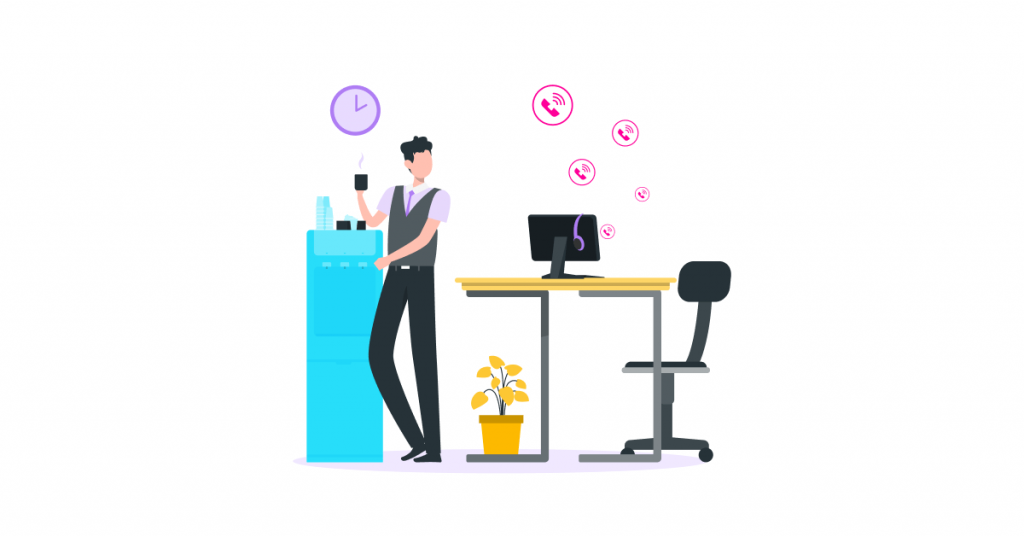
When agents are deliberately avoiding calls in contact centers, it means fewer calls are answered, and fewer customers are being taken care of. In terms of call center metrics, it leads to longer waiting times on hold for customers, an increased number of abandoned calls, lower Customer Satisfaction Score (CSAT), and higher Customer Effort Score (CES). That ultimately results in more frustrated and dissatisfied customers, making for a worse customer experience and meaning a call center is not serving its primary purpose of helping customers.
Best Strategies to Deal with Call Avoidance
To effectively tackle call avoidance, call centers can take advantage of various strategies. Here are the most efficient ones:
Identifying the underlying cause
The first step in handling call avoidance is to identify the underlying causes by taking a proactive approach. Call center managers and leaders should consistently track and analyze call center metrics and KPIs like call escalation rates, average handling times, call resolution rates, CSAT scores, and repeat calls to get a deeper insight into agent behavior and potential reasons for call avoidance, which can often be a sign of deeper issues within the call center. Reviewing call recordings or call transcripts can also help identify the root causes that prompt agents to avoid calls.
Call avoidance may be occurring because of a lack of knowledge, excessive workload, high-stress environments, poor team morale, process inefficiencies, or even personal issues employees are facing. Along with tracking metrics and KPIs, it’s crucial for managers to maintain an open and transparent dialogue with their team members and seek agent feedback.
It can be done by conducting surveys, interviews, or one-on-one meetings and encouraging agents to share their experiences, concerns, and challenges. Managers can ask agents specific questions about the types of calls agents tend to avoid, their level of confidence in resolving certain issues, or any obstacles standing in the way of delivering effective support and leading to call avoidance.
Setting expectations for agents
Providing agents with clear expectations is an important aspect of reducing call avoidance in contact centers. Agents should have a clear understanding of their work hours, break schedules, tasks and responsibilities, performance standards, and service quality they are expected to deliver. Defining specific KPIs helps agents focus on achieving their goals and hitting performance targets and discourages call avoidance behavior.
Managers should also clearly communicate internal policies and procedures to their team members, including call avoidance policies. Agents must be aware of what measures and disciplinary actions are in place in cases of low performance and consistent call avoidance without a valid reason.
Avoiding a zero-tolerance policy
Having a well-thought-out call avoidance policy is essential, yet it shouldn’t be overly strict. While burnout is a common issue in call centers, implementing a zero-tolerance policy would only create a more stressful work environment and put more pressure on agents, contributing to even higher burnout levels and lowered morale and engagement.
Call avoidance policies must give agents a clear understanding of what is expected of them and what standards they are supposed to meet. However, if every case of call avoidance is met with punishment and sanctions, regardless of any circumstances that might have caused it, that creates a counter-productive workplace environment. Not only does it affect employee morale and productivity, but it also leads to poorer experiences delivered to customers.
Implementing skill-based routing
With skill-based call routing enabled in the call center software system, incoming customer calls are routed to agents with the most appropriate skills and experience required to resolve certain types of issues. That means agents would primarily deal with incoming requests that align with their expertise, spending less time and effort on handling calls. It will ultimately make them feel more competent and confident in resolving inquiries, which helps reduce call avoidance.
Employing skill-based routing also minimizes the need for call transfers and escalations while increasing FCR rates and customer satisfaction levels. In addition, by routing calls based on agent skills, you can improve agent experience and engagement, enhance their efficiency and productivity, and ensure better resource utilization in your call center, lowering the likelihood of call avoidance.
Introducing self-service options
One of the most efficient call avoidance call center strategies is to implement self-service support options. That can include FAQ pages, online portals, knowledge base articles, an automated call response system (IVR), chatbots, and voice bots. Self-service channels are becoming increasingly preferred by consumers as they enable them to find immediate answers to their questions and resolve at least basic inquiries independently, 24/7, without the need for human-based assistance.
By empowering customers to help themselves through self-service tools, call centers can significantly lower inbound call volumes and reduce the workload on agents, freeing them up to focus on other tasks and critical interactions. It helps minimize call avoidance by reducing the overall number of inbound calls agents are required to handle.
Leveraging omnichannel contact center solutions
Consumers increasingly want to interact with brands they are dealing with through a number of different channels. According to a Salesforce study, 57% of customers prefer to engage companies through digital channels. By offering various communication channels, like email, SMS, social media, self-service options, WhatsApp, etc. – contact centers can reduce the overall inbound call volumes as consumers will have alternative channels to connect with brands and resolve their issues, thus helping reduce call avoidance.
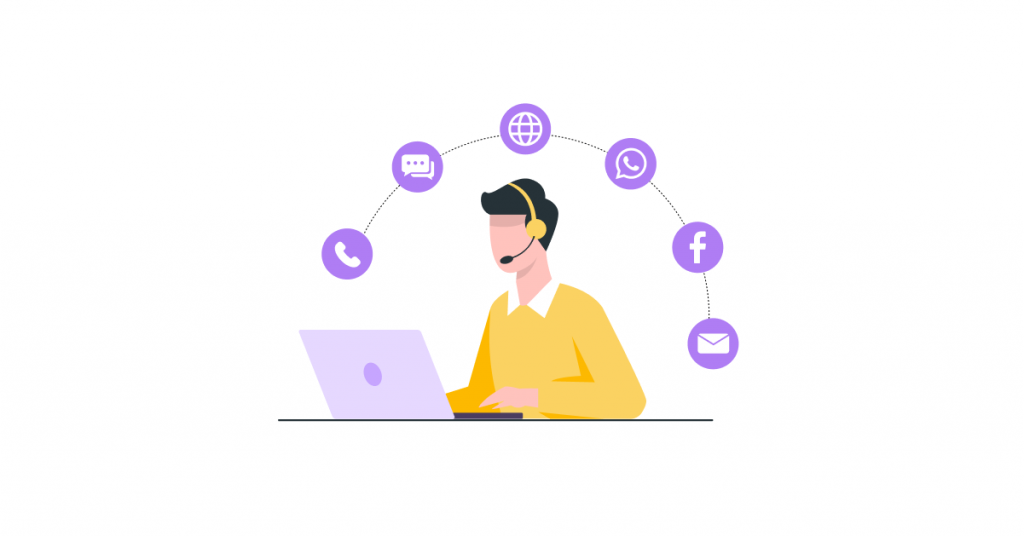
To ensure a seamless customer service experience, it’s important to ensure that the channels you offer to customers are integrated into a single omnichannel contact center platform. That means whatever channel a customer prefers to use to start or proceed with the interaction, agents will have the context of previous engagements, enabling them to deliver personalized, omnichannel experiences across all the channels. Otherwise, it might lead to communication silos and lower customer satisfaction.
Reducing call center agent burnout
When agents experience burnout, which is often associated with exhaustion, frustration, and lack of fulfillment, they become less engaged, less motivated, less satisfied with their jobs, and less committed to engaging with customers – all prompting them to seek ways to avoid calls. By implementing strategies that mitigate burnout, call center leaders can create a workplace environment that promotes engagement, helps improve job satisfaction, and reduce the instances of deliberate call avoidance.

You can prevent and efficiently deal with agent burnout by means of:
- Setting realistic goals and performance targets without overwhelming agents.
- Fostering a positive, collaborative, and supportive call center environment.
- Encouraging open and honest communication and feedback exchange.
- Implementing flexible scheduling options and remote/ hybrid work opportunities.
- Consistently monitoring workload and staffing levels to ensure a manageable workload.
- Assisting agents in maintaining a healthy work-life balance and mental health.
- Providing ongoing training and development to enhance agent competence.
- Recognizing and regularly rewarding agents for their achievements.
- Offering various team-building activities to boost engagement and morale.
Recognizing and rewarding agents
Regularly recognizing and rewarding contact center agents for their input reduces workplace stress, helps avoid burnout, increases engagement, improves morale, and boosts employee satisfaction, thus contributing to reduced call avoidance. Based on the 2023 Employee Engagement Trends Report by Reward Gateway, 60% of employees want their employer to increase their investment in employee reward and recognition, while 74% of the employees that frequently experience stress at work rate recognition as poor.
Agents who feel valued and appreciated for their work are more likely to take pride in their performance and are more motivated to go above and beyond to deliver exceptional customer service experiences. Contact centers can reward agents by providing incentives or bonuses tied to performance metrics like CSAT scores or call resolution rates, encouraging agents to actively engage in call handling and focus on delivering exceptional results, thus overcoming call avoidance tendencies.
Future Trends in Managing Call Avoidance
Due to the growing adoption of digital communication channels and self-service tools by consumers, more contact centers will be looking to leverage call avoidance as a deliberate strategy to reduce the inbound call volume to the contact center, encourage customers to interact through digital channels, and reduce operational costs associated with telephony. That involves providing customers with self-service IVR, chatbots, and other AI-powered self-service capabilities, diverting customers seeking support to digital channels, and ensuring omnichannel service experiences across all touchpoints.

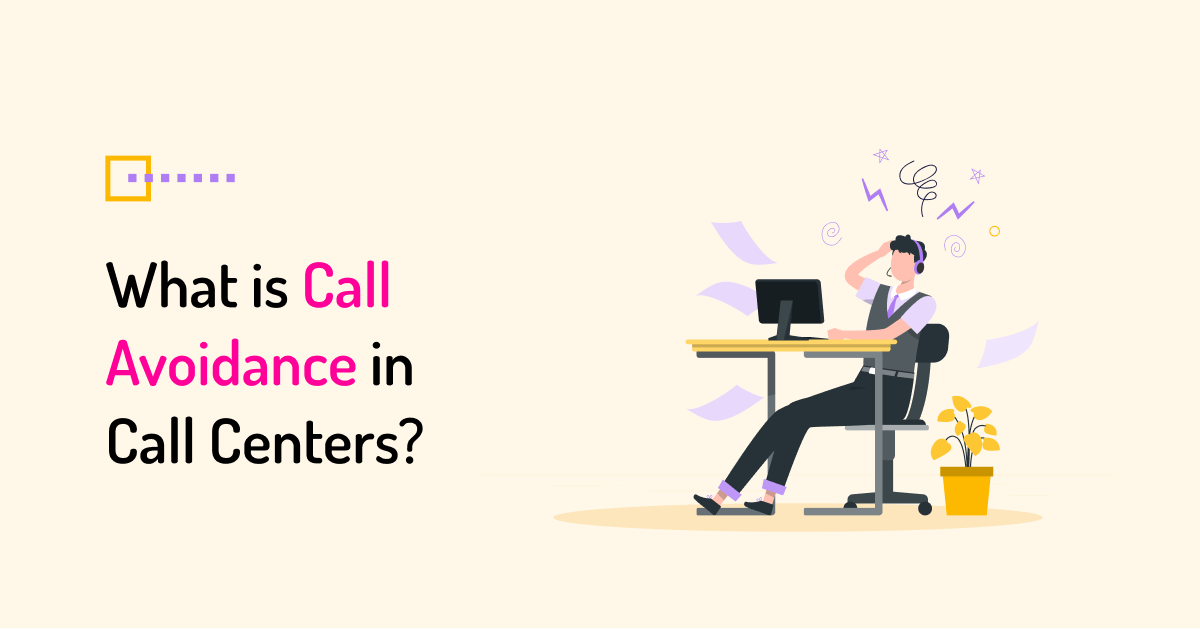

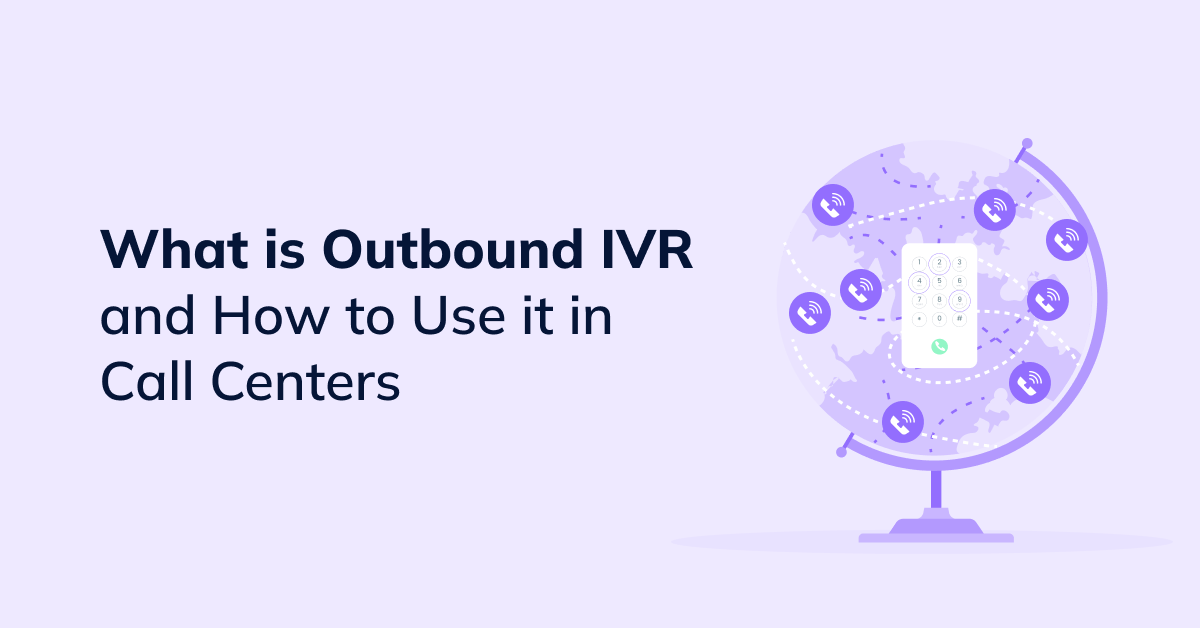
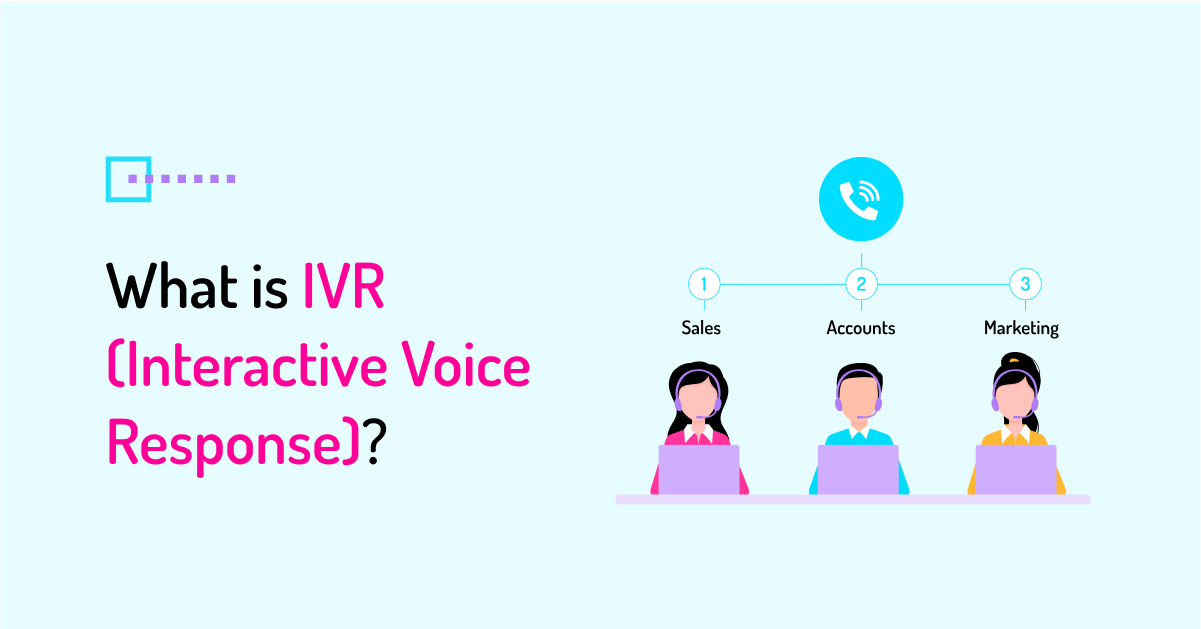
 +18889082995
+18889082995
 +442036084160
+442036084160
 +97237237006
+97237237006